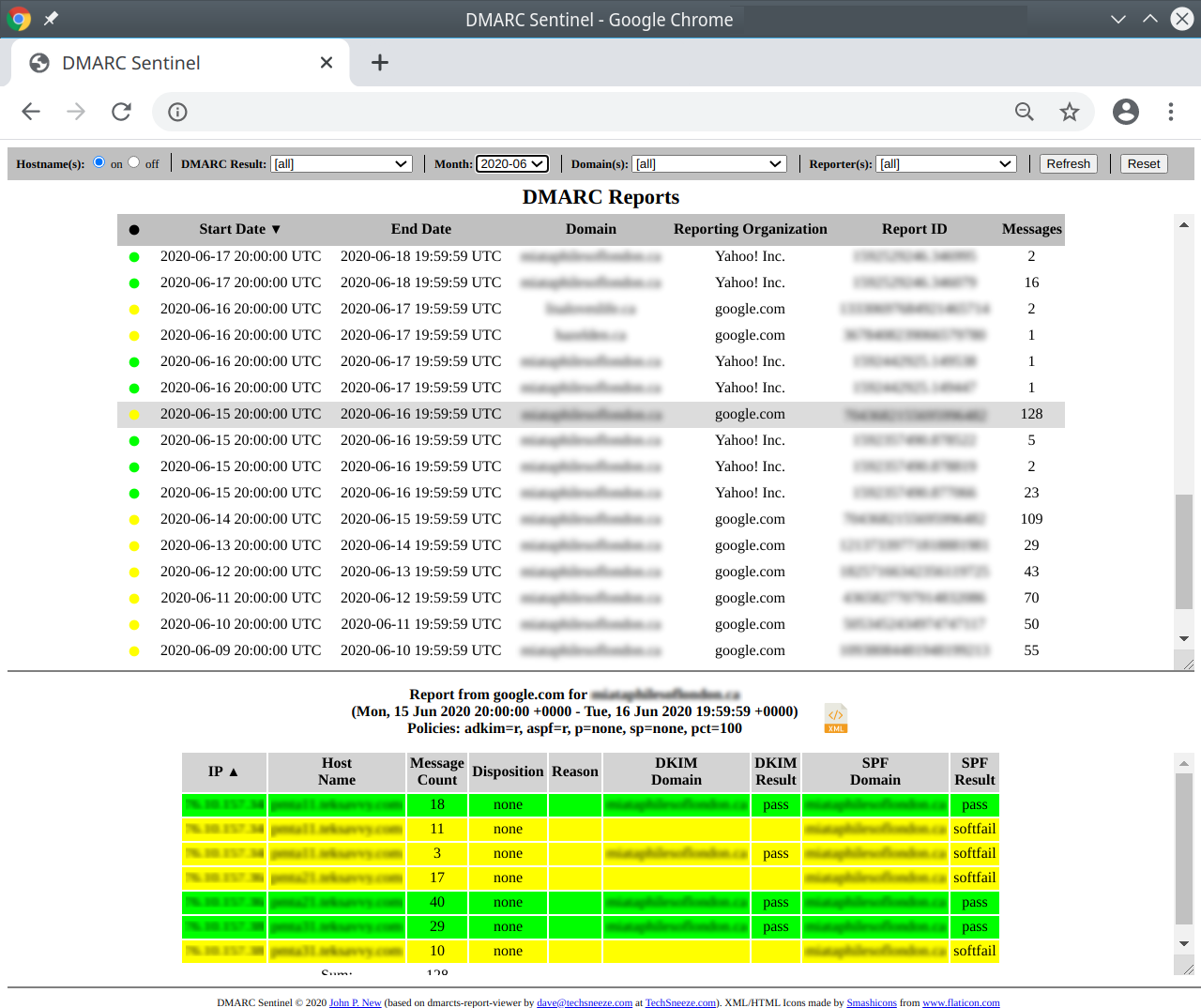Feature set
Techsneeze DMARCts report viewer offers a robust, self-hosted solution for DMARC report parsing. Its primary function is to ingest DMARC aggregate reports, process them, and present the data in a visual format. We found its core strength lies in providing a clear, unfiltered view of DMARC alignment and authentication results directly from the XML reports.
While effective for fundamental DMARC monitoring, the feature set is intentionally lean. It focuses on the essentials, such as showing SPF, DKIM, and DMARC passes or failures, and identifying sending sources. We've seen that advanced features like SPF flattening, BIMI support, or integrated blocklist monitoring are beyond its scope, maintaining its simplicity and open-source nature.
The Splunk TA-DMARC add-on, being a component within the Splunk ecosystem, inherits Splunk's powerful data processing and visualization capabilities. It is designed to parse DMARC aggregate reports ingested into Splunk, allowing users to leverage Splunk's search language (SPL) for deep analysis. We appreciate how it transforms raw DMARC data into actionable intelligence within the Splunk environment.
Its feature set is largely defined by Splunk itself. While the add-on specifically handles DMARC data, any advanced reporting, alerting, or integration capabilities stem from the broader Splunk platform. We've noted that it doesn't introduce DMARC-specific features like hosted DMARC or MTA-STS monitoring, but rather provides the DMARC data for Splunk to analyze and report on according to the user's existing Splunk infrastructure and skills.











































 0 / 5(0)
0 / 5(0)
 0 / 5(0)
0 / 5(0)



